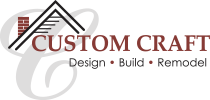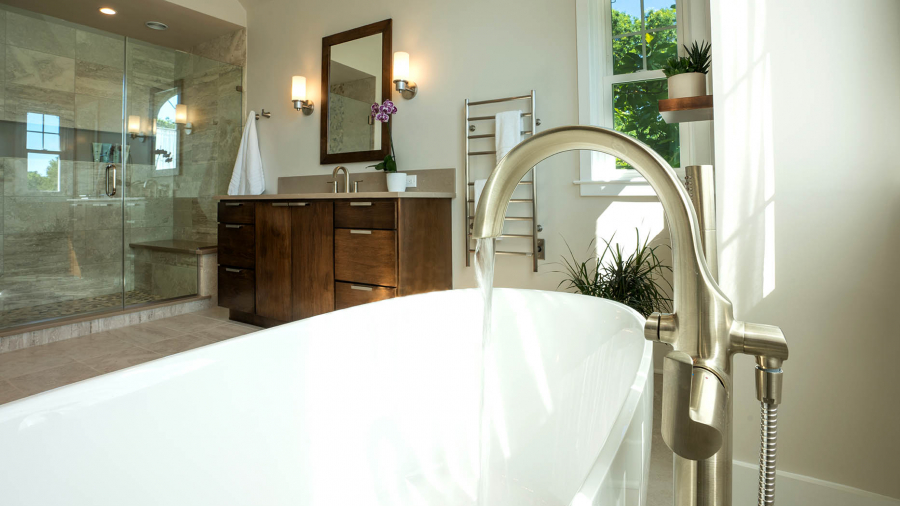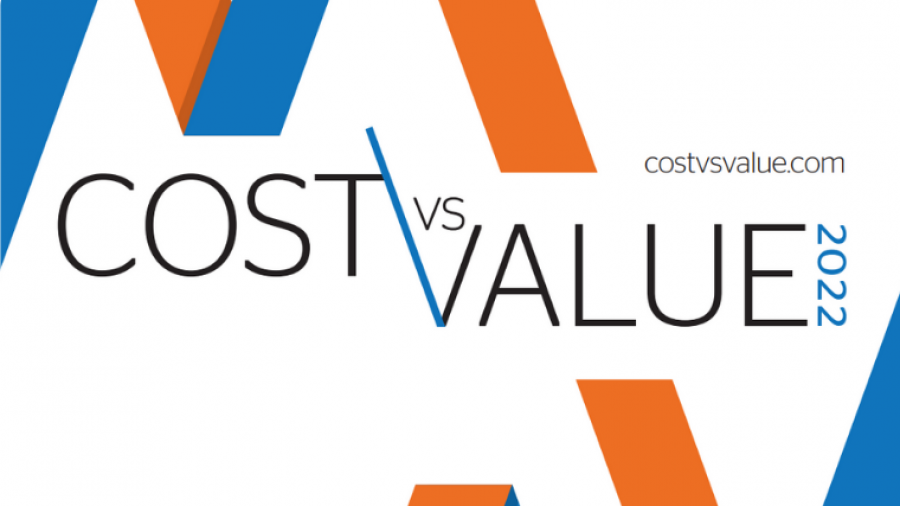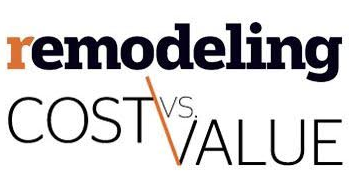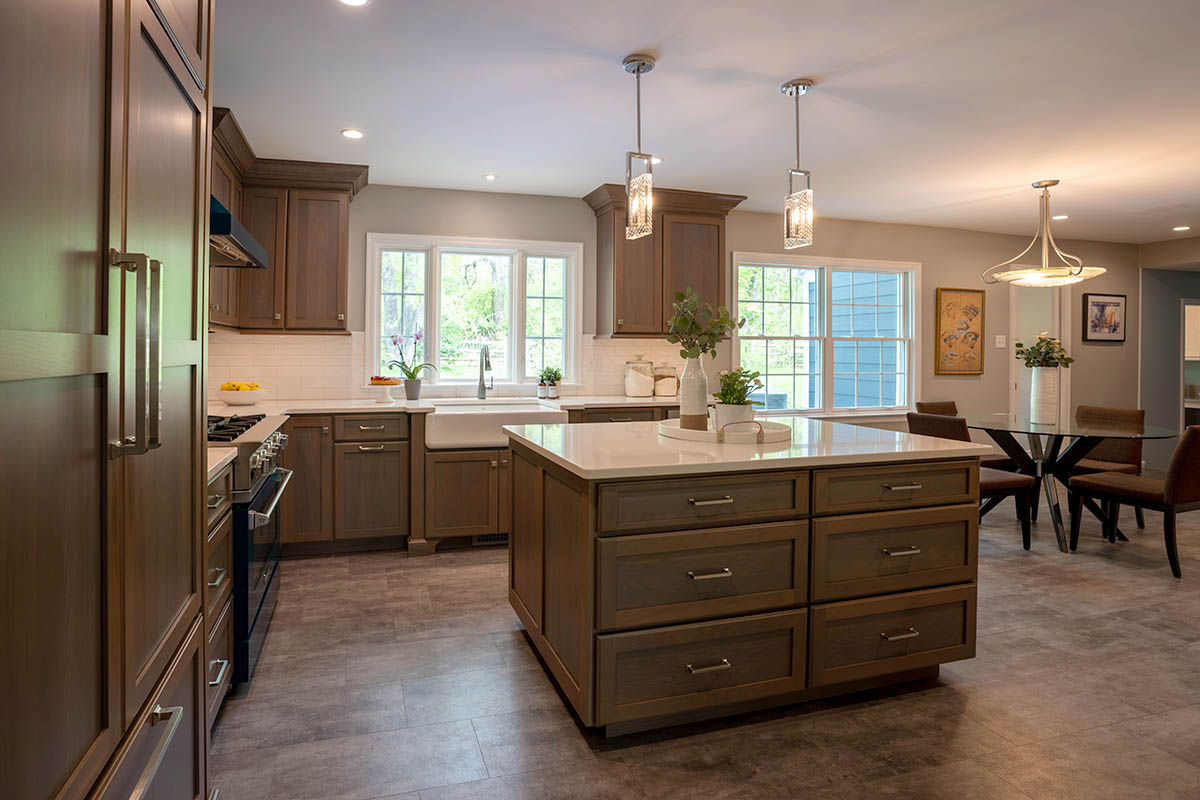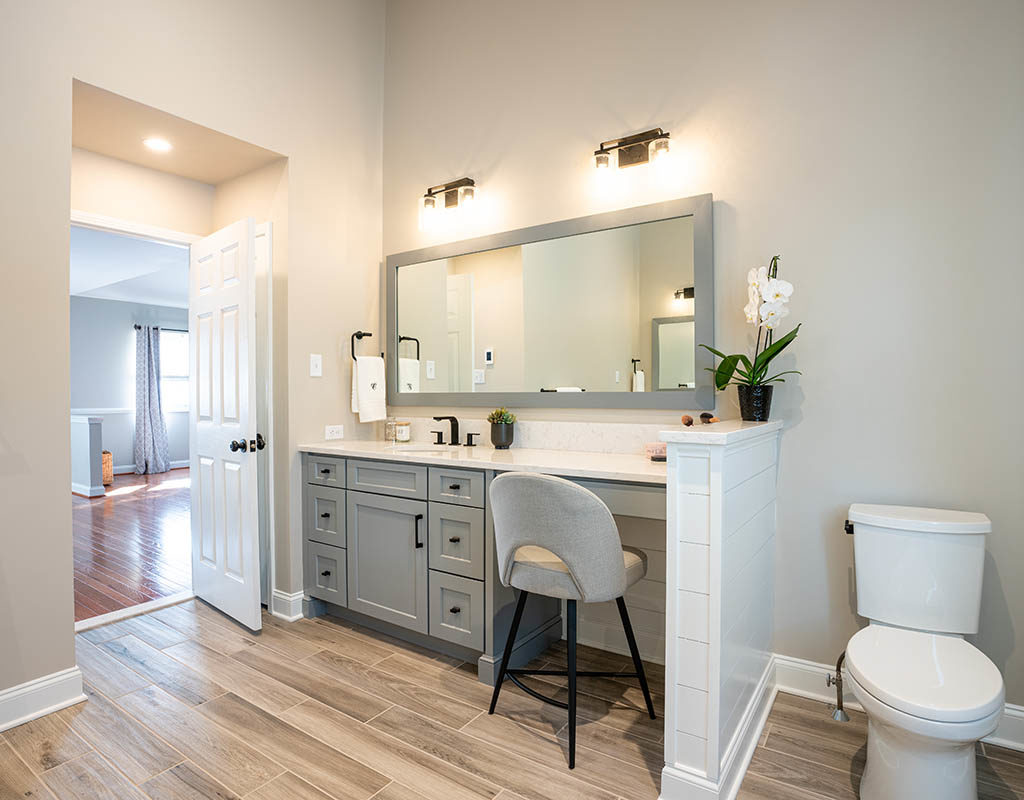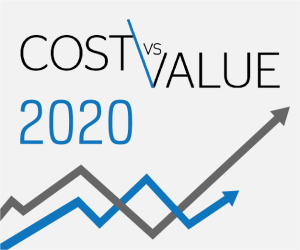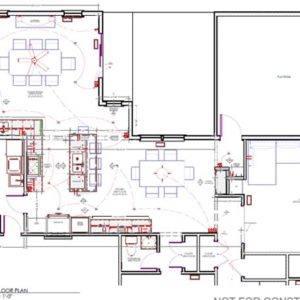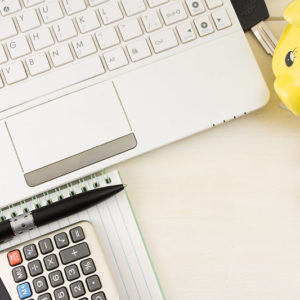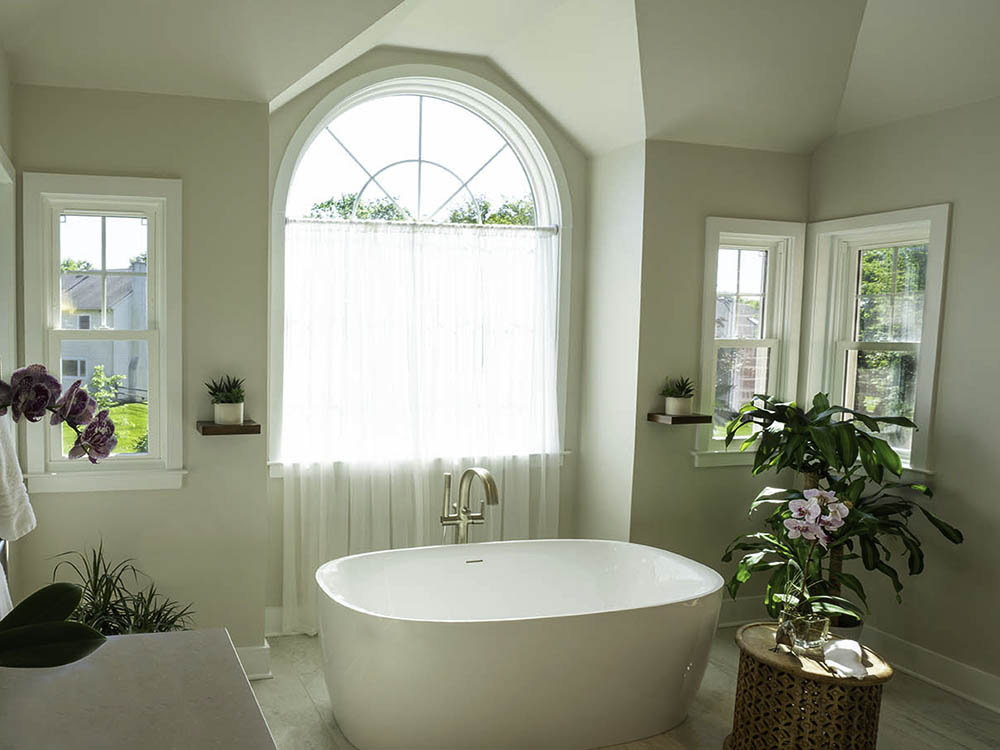
Bathroom remodels are big, and it’s easy to see why. Your home’s primary bathroom needs to energize you in the morning as you get ready for the day and calm and relax you as you unwind at night. It should feel both luxurious and functional, with everything out of sight and readily available. All of these needs involve personal preference and taste, as well; that’s why bathrooms are often among the first rooms homeowners dream about remodeling.
Of course, the typical homeowner only stays in one place for around thirteen years, at which point their perfectly personalized home will need to appeal to potential buyers. We’re often asked if bathroom customizations will be a problem or a plus — especially when it comes to tubs. Many homeowners today are removing tubs from the primary bath, opting instead for large, sumptuous, and often high-tech showers. Will that be an issue?
We reached out to Geoff Slick from The Mark McGuire Team at Keller Williams Real Estate to get the best answer. Geoff is known throughout Bucks and Montgomery Counties as an experienced realtor with incredible integrity — he can always be counted on to help sellers get top dollar and help buyers avoid potential money pits. He thoroughly answered our tub-or-not-to-tub question — and so much more.
What Do Today’s Home Buyers Want?
Before barreling into bathrooms, we asked Geoff about the items topping buyers’ wish lists. Here are just a few:
Location, location, location
Location is the number one factor for buyers as well as homeowners deciding whether to remodel or move. Geoff tells us that recently, more people have been leaving cities for the suburbs, and the first things they look for are great school districts and thriving communities. This makes sense to us; location is the one thing even the best remodeler can’t change.
Open kitchens
Kitchens with good flow and room for several people to gather are a high priority. Open floorplans that make the kitchen part of the main living space are great for entertaining and spending time together as a family. As a bonus, a spacious island with storage and seating is hard to pass up.
Finished basements
House hunters always appreciate a nicely finished basement, particularly one with a full bathroom. From guest rooms to offices to playrooms for the kids, uses of finished basements are only limited by the imagination.
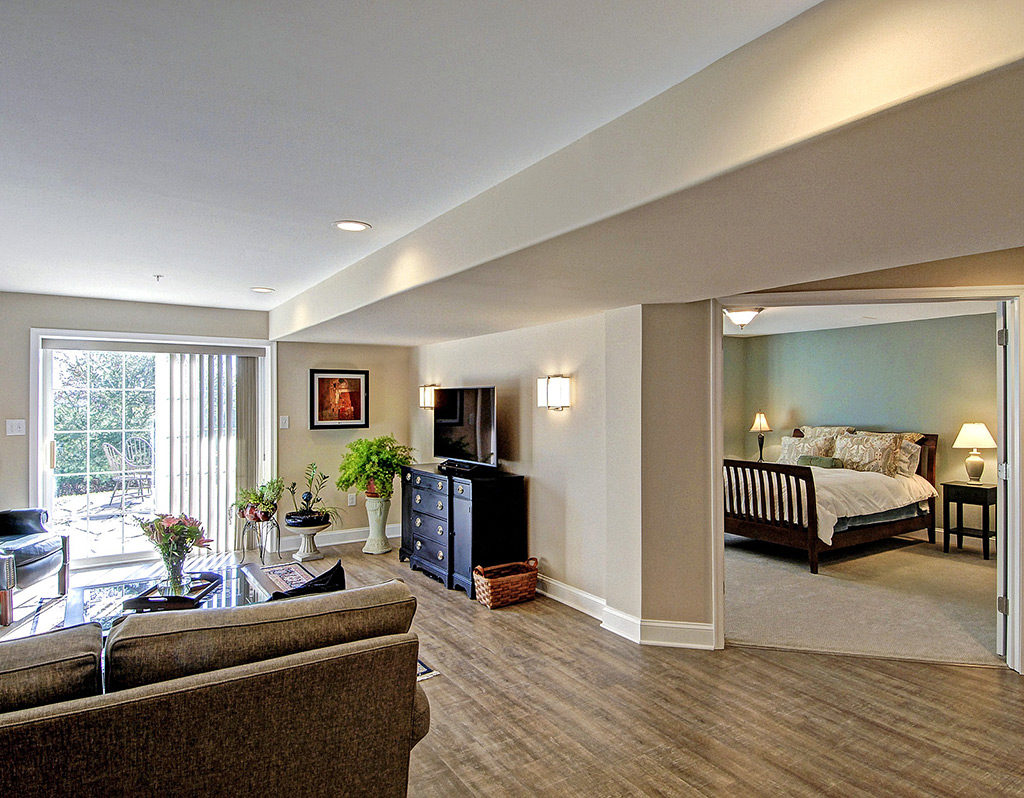
Hotel-style owner’s suite
There’s nothing like a resort’s luxurious, rejuvenating feel, so it’s no wonder many homeowners long for serene owner’s suites with spa-like bathrooms. Oversized showers, freestanding tubs, double vanities, extra storage, and exquisite lighting all go a long way to achieving that 5-star hotel feel.

What About the Bathtub?
Luxurious bathrooms are desirable, and their remodeling ROI is relatively high. But is it essential to include a bathtub? Not necessarily. Geoff says that while it’s a good idea to have a bathtub somewhere in your home (it could be a deal-breaker for a future buyer with children or dogs), there’s no reason it needs to be in your primary bathroom.
In most cases, homeowners prefer showers over baths. They save time and water and may be safer and more accessible for those considering aging-in-place.
Love your bathtub? That’s okay, too! If you’re on team tub, here are a few things to keep in mind:
Say no to massive platform tubs
Large, deck-mounted platform tubs had their moment, and now it’s time to move on. Homeowners rarely use them because they take so long to fill and lose warmth quickly. Furthermore, they take up a lot of valuable space that could be used for other in-demand things, like a large double vanity.
Consider a clawfoot
According to Geoff, freestanding soaking tubs are trending. Soaking tubs like the classic clawfoot aren’t just stunning; they’re also practical. Their depth allows homeowners to fully submerge for maximum relaxation. At the same time, they fill up quickly and retain a soothing temperature for much longer.
Have your tub and shower too
Having trouble choosing between a luxurious soaking tub and a spa-like shower? Why not have both? Freestanding tubs can be deep with a small footprint, leaving enough space for a separate walk-in shower.
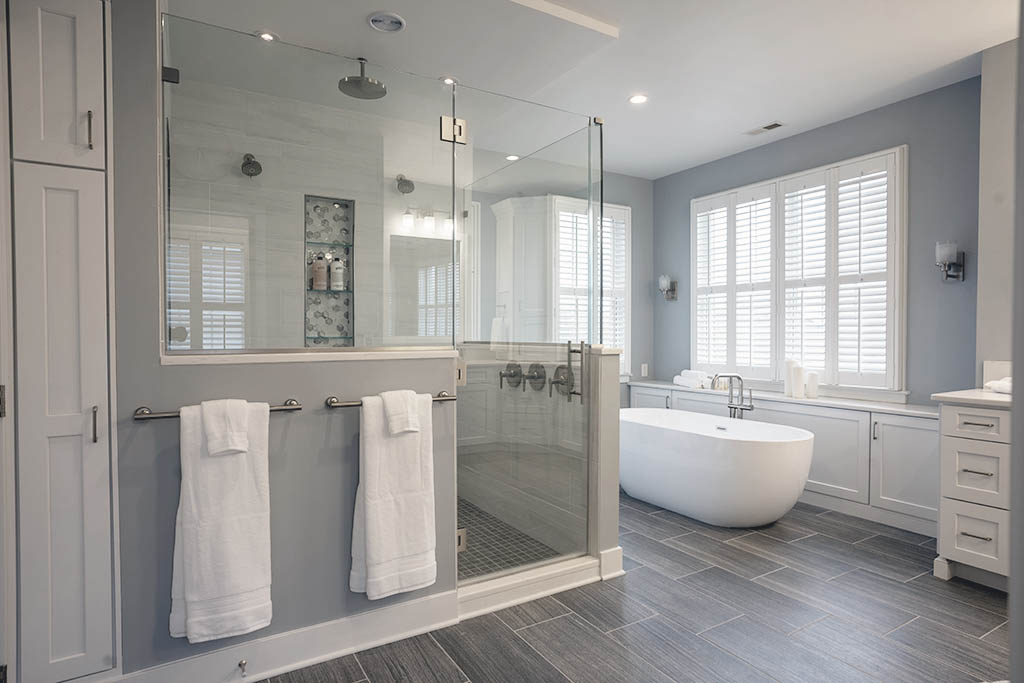
Go ahead — take out that tub. Or don’t! In the end, it’s important to remember your remodel is personal. Make decisions based on your enjoyment and comfort first. If you don’t think you’d use a tub, go with a large, luxurious shower for your primary bathroom instead.
Whatever you decide, Custom Craft is here to help. Contact us with all your bathroom remodel questions.
Special thanks to Geoff Slick from The Mark McGuire Team and 1SlickHome.com. Reach out if you’re in the market for a new home (or some really great wine!) — he’s a trusted resource who will quickly become a lifelong friend.
